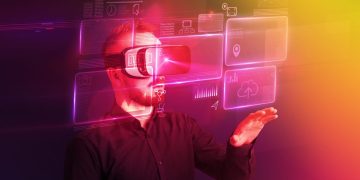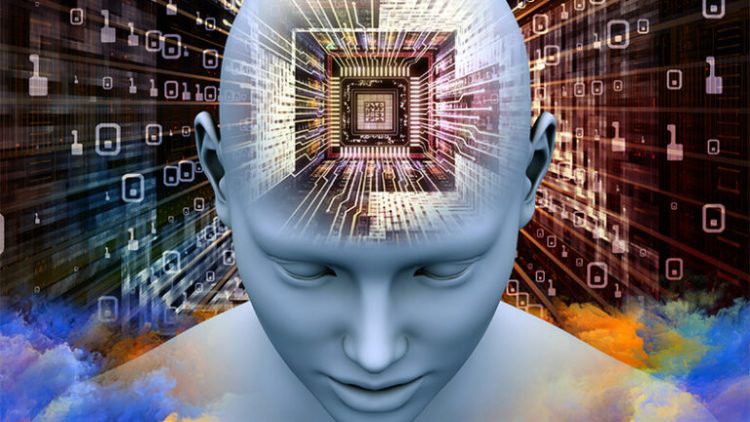In recent years, brain-computer interfaces (BCIs) have emerged as one of the most exciting and transformative technologies, with the potential to revolutionize how we interact with the digital world. BCIs are systems that enable direct communication between the brain and external devices, bypassing the traditional methods of interaction such as keyboards, touchscreens, or voice commands. The possibilities that BCIs present range from medical applications, like helping individuals with disabilities regain independence, to enhanced human cognition and new ways to interact with technology.
This article explores the emerging technology of brain-computer interfaces, examining their current state, potential uses, and the profound ways in which they could reshape our relationship with machines.
1. What Are Brain-Computer Interfaces (BCIs)?
At their core, BCIs are technologies that create a direct communication pathway between the brain and external devices. They involve the detection of electrical activity in the brain, interpreting that activity, and translating it into commands that can control machines, devices, or software. BCIs typically work by detecting brain waves—patterns of electrical activity in the brain—and then processing these signals to translate them into meaningful commands.
These interfaces can be either invasive or non-invasive:
- Invasive BCIs involve implanting electrodes directly into the brain, which allows for high-resolution data acquisition. These types of interfaces are typically used for medical treatments, such as helping people with severe disabilities regain lost functionality (e.g., controlling prosthetic limbs or even typing).
- Non-invasive BCIs are less intrusive, using technologies like electroencephalography (EEG) to measure brain activity from outside the skull, usually through a wearable headset. While they are less precise than invasive methods, non-invasive BCIs are safer and more practical for consumer applications.
2. The Science Behind BCIs: Understanding Brain Signals
The brain generates electrical signals whenever neurons communicate with each other. These signals are often grouped into different frequency bands, such as alpha, beta, theta, and delta waves. By measuring the electrical activity of the brain, BCIs can identify specific patterns associated with mental states or intentions.
For example, when you think about moving your arm, your brain sends electrical signals to the muscles through the nervous system. A BCI system can pick up these signals, interpret them, and use them to control a robotic arm or other external device. Similarly, BCIs can be trained to detect signals associated with tasks such as thinking of a specific word, recognizing a visual image, or even meditating.
To enable real-time communication, BCIs need to be equipped with sophisticated signal processing algorithms that can decipher these brainwave patterns and translate them into actions. Machine learning plays a vital role in improving the accuracy and efficiency of these algorithms.

3. Applications of BCIs: Transforming Medicine and Beyond
Brain-computer interfaces have tremendous potential in a wide range of fields. While much of the current research focuses on medical applications, BCIs are expanding into areas such as gaming, entertainment, communication, and human augmentation.
Medical Applications:
The most impactful and well-known application of BCIs today is in the field of medicine. BCIs are being developed to help people with physical disabilities or neurological disorders regain lost function. Some key applications include:
- Restoring Movement to Paralyzed Individuals: BCIs can help individuals who are paralyzed due to conditions like spinal cord injury or stroke regain control over their limbs by bypassing damaged neural pathways and directly controlling prosthetic limbs or exoskeletons. Through the use of neural implants or wearable devices, paralyzed individuals can learn to control these devices using their brain signals, giving them greater independence and mobility.
- Treating Neurological Disorders: BCIs have shown promise in helping patients with neurological conditions such as Parkinson’s disease, epilepsy, and brain injuries. For instance, BCIs can be used to detect abnormal brain activity and deliver targeted electrical stimulation to areas of the brain, offering a form of treatment that could reduce symptoms like tremors or seizures. Deep brain stimulation (DBS) has been used in some cases to treat Parkinson’s disease, and BCIs offer a more direct and tailored method of delivering this therapy.
- Communication for People with Locked-In Syndrome: Individuals with locked-in syndrome are fully aware but unable to move or communicate due to severe paralysis. BCIs offer a lifeline for these patients, allowing them to communicate with caregivers and loved ones by controlling a computer or speech-generating device using only their thoughts.
Enhancing Human Abilities:
As the technology continues to evolve, BCIs also have the potential to enhance human cognition and augment our natural capabilities. This can include:
- Cognitive Enhancement: BCIs could one day be used to enhance memory, attention, or decision-making abilities. For example, brain-computer interfaces may enable individuals to “download” information directly into their brain, speeding up learning processes and boosting productivity. Additionally, BCIs could help individuals with cognitive impairments, such as Alzheimer’s disease, by facilitating brain function and memory recall.
- Human-Machine Interaction: BCIs could change how we interact with machines in profound ways. With BCIs, users could control computers, smartphones, and even vehicles purely with their thoughts, bypassing traditional methods like typing or voice commands. For instance, video games could be controlled with thought alone, creating a more immersive experience. Similarly, BCIs could enable people to control smart home devices, such as lights, thermostats, or security systems, just by thinking about it.
Entertainment and Gaming:
The gaming industry stands to benefit greatly from the advent of BCIs. Neural-controlled gaming is already a reality in some experimental setups, where players can control characters and interact with virtual environments using their brain signals. This could lead to the next frontier in gaming, where players have an unprecedented level of immersion and control.
In addition, BCIs could be integrated into virtual reality (VR) and augmented reality (AR) experiences to create fully immersive environments controlled by thought, offering unparalleled levels of interaction. The ability to manipulate a virtual world with just your mind would revolutionize not only entertainment but also education and training simulations.
Brain-Machine Interfaces for Artificial Limbs:
The development of prosthetic limbs that can be controlled with thoughts has already seen significant advancements, with BCIs enabling users to move artificial arms and legs as though they were part of their body. This creates more natural and functional prosthetics that offer greater mobility and dexterity.
4. Challenges and Ethical Considerations
Despite the exciting possibilities, the development and widespread adoption of brain-computer interfaces face several technical, ethical, and societal challenges:
Technical Hurdles:
- Signal Resolution and Accuracy: For BCIs to be practical, they must be able to interpret brain signals with high accuracy and low latency. Current technology, especially non-invasive BCIs, still faces challenges in distinguishing between subtle brainwave patterns and achieving fine control over external devices.
- Invasiveness: Invasive BCIs, while offering higher precision, involve risks associated with brain surgery, including infection and tissue damage. Non-invasive BCIs are safer but may not provide the same level of detail or control.
- Data Processing and Bandwidth: Real-time interpretation of brain signals requires robust data processing capabilities. As brain data can be vast and complex, there is a need for more efficient algorithms and processing power to handle the continuous flow of information.
Ethical Concerns:
- Privacy and Security: With the ability to read and interpret brain activity comes the potential for misuse. BCIs could raise privacy concerns, such as unauthorized access to private thoughts, memories, or intentions. Ensuring that brain data is protected and used ethically will be crucial as the technology progresses.
- Identity and Autonomy: As BCIs have the potential to alter brain functions or enhance cognitive abilities, there are questions surrounding identity and autonomy. Will altering brain activity through BCIs change the essence of who we are? And how might enhanced cognitive abilities impact societal issues such as fairness and inequality?
- Social and Psychological Effects: The integration of BCIs into daily life could have significant social and psychological effects. What will it mean for human relationships when people can share thoughts and experiences directly with each other, or when individuals become more dependent on external devices for cognitive functions?
5. The Future of Brain-Computer Interfaces
The future of BCIs holds incredible potential, not only for enhancing medical treatment but also for transforming the way we interact with the world around us. With continued research and development, we may soon see BCIs integrated into mainstream technology, providing new ways for people to communicate, control devices, and augment their natural abilities.
While challenges remain, especially in terms of privacy, accessibility, and technical limitations, the possibilities for BCIs are vast. As we continue to merge minds with machines, the boundaries of what’s possible will expand, enabling a future where human potential is enhanced in ways that were once unimaginable.


















































Discussion about this post